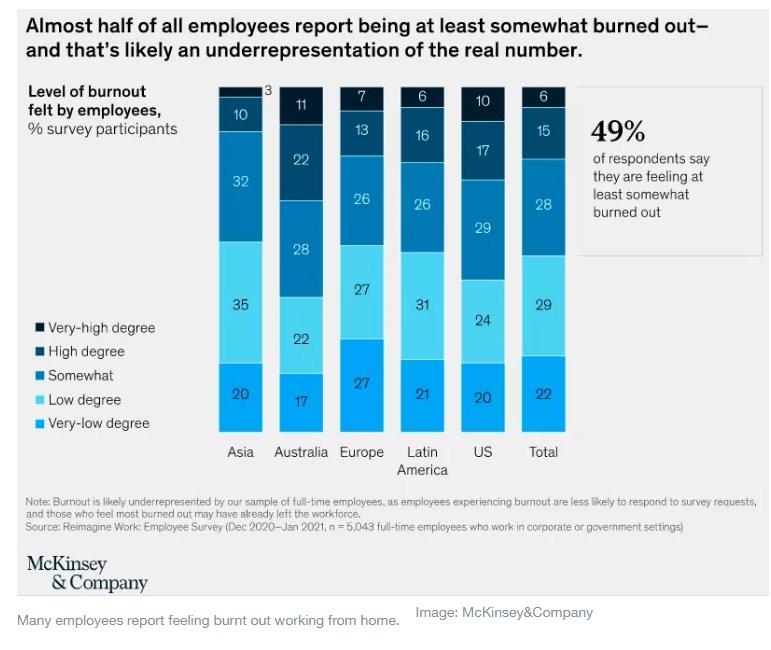by Tsedal Neeley*
Covid-19 has made virtual work the new normal.
In a few short weeks, meeting tools like Zoom, Microsoft Teams, Google Chat, and Slack have gone from a useful supplement to the primary enablers for daily interactions with co-workers. Workspaces have transferred from company locations to home offices, kitchen tables, and bedrooms. Parents suddenly needed to juggle homeschooling while learning how to be effective remote workers. Working from home during a global pandemic has introduced new formats, patterns, challenges, and even opportunities for people in countless organizations.
Now that people have been working from home for a few weeks, leaders need to hold a “working from home” relaunch to help their teams learn to reorient based on the new realities. While team launches set the course of a group at the moment it comes together, relaunches act as resets. The Covid-19 pandemic upending routines calls for relaunches to help leaders and team members understand how each member has been affected, figure out how to address concerns, and ultimately get everyone back on the same track to achieve team goals.
Team leaders should focus their relaunch in four key areas, and the place to start is to revisit the team’s sense of shared purpose.
Revisit your shared purpose. A relaunch ensures that every team member understands and buys into the clear and specific goals that the team has been mobilized to accomplish. It is an opportunity for each member to update the team’s shared purpose by offering input, asking questions, and responding to others based on their experience working together thus far. In the relaunch session, the team can discuss how business goals and strategy may have changed in light of the pandemic. Perhaps customers’ needs have changed or a supply chain within a key industry has shut down and the team needs to reevaluate how to continue delivering value under these new conditions The relaunch is also an opportunity to discuss how team members’ own perspectives on the team’s purpose may have changed. Given the scope and the rate of change, the team needs to make sure everyone is on the same page about the most fundamental questions.

Reassess available resources: The relaunch is a time to reexamine information, budgetary resources, and networks that will help the team advance its goals. Generating a detailed list of every single item is not necessary, but the relaunch session helps team members reach a general consensus about what the team needs, its current resources, and how to access them. The group should be on the same page about how the pandemic has affected the team’s budget and partnerships with other organizations. Leaders must make sure team members are aware of what is still within the team’s toolkit as they press forward.
Understand members’ constraints:
A relaunch is an ideal opportunity for each member to discuss their respective roles and how they have been contributing to team goals. Team members should be candid about how the work-from-home format has affected their productivity. Some may need assistance getting familiar with mediating tools. Some may be juggling family responsibilities that limit their availability at certain times of the day. In these circumstances, it’s crucial to know how team members are coping with the added demands so that the team is able to support members, manage deadline expectations, and rebalance task loads accordingly.
Reestablish norms: Most important, the relaunch is the time for team members to reevaluate how to conduct themselves and interact amid the changing circumstances. Topics for discussion should include how often team members should connect virtually during the week, and with what digital tools. Teams must be deliberate about their media selection. Some interactions might be more suitable for delayed communication platforms, like email, which allows team members time to think and prioritize before responding. Other topics might require instant communication tools like video conferencing platforms, where team members communicate in real time. When choosing which tools are best for a discussion, teams should also be sensitive to the fact that real-time video chat—while an essential tool for virtual teams—is not the same as face-to-face interaction. When communicating through a screen, we may miss nonverbal cues, struggle with the internet connection, or feel self-conscious about when and how to offer input during the discussion. What’s more, “Zoom fatigue” is real, and teams can combat it by relying on email or other media when real-time communication isn’t necessary.
The group should also discuss new etiquette for reaching out, making requests, and collaborating in each respective platform. When working from home, we often find ourselves trying to manage family responsibilities and work tasks at the same time, and the boundaries between work and home can get blurry. Norms that strive to make the distinction as clear as possible—whether it is saying that if someone sends work correspondence before and after certain timeframes it’s fine not to receive a response until business hours or maintaining consistent expectations for punctuality and attendance in online meetings—help mitigate the confusion, exhaustion, and frustration that can come when work life and home life become entangled.
Teams also need to be deliberate about how to stay connected with one another while working from home. New team norms can address feelings of isolation that may have arisen through social distancing measures. Preserving times in the work schedule for virtual lunches, coffee breaks, or happy hours with team members are crucial to establish during the relaunch.
Other relaunch tips and techniques
Schedule regular relaunches as things change. The relaunch isn’t a one-and-done event. Relaunches are important in good times but crucial in times of uncertainty. Hitting the reset button once won’t be enough. It would be self-defeating to put voice to these unprecedented feelings of anxiety and uncertainty only to bury them away and trudge along as though the problem has been solved. The team might switch to a new mediating tool that calls for new norms of communication. The government might introduce new stay-at-home measures that affect people’s work patterns. Countries, markets, or entire industries might make a sudden shift that require the team to reorient their goals. For as long as the crisis continues to evolve and its timeline remains uncertain, leaders and their teams must continuously evolve as well. Periodic relaunches are the only structured mechanisms to give teams the ability to pivot together quickly.
Don’t forget your own leadership relaunches. To guide teams through these drastic changes, leaders must take the difficult step of acknowledging to themselves and the team that there is no guidebook for what everyone is going through. Leaders are learning and improving as they go. Many leaders may feel that they haven’t been able to provide the guidance that team members need to manage their work during the crisis. Some leaders have been too hands-off, leaving team members lost. Others have micromanaged in an attempt to maintain stability amid the anxiety, exacerbating already heightened levels of stress.
In the words of John Kenneth Galbraith, renowned economist and diplomat, “All of the great leaders have had one characteristic in common: It was the willingness to confront unequivocally the major anxiety of their people in their time. This, and not much else, is the essence of leadership.”
With every relaunch, leaders must be ready to own the reality of the current circumstances, no matter how uncomfortable it may appear in the present moment. Leaders might initially be inclined to tune out the feelings that can get in the way of progress. But, ignoring the anxiety, grief, and isolation that people are feeling will not keep people focused on their goals. On the contrary, employees will end up feeling even more distant and disconnected from their jobs and their leaders who will appear tone deaf and out of touch.
Leaders should acknowledge mistakes, show their team that they see and hear them—and feel vulnerable just as they do. Leaders don’t need to be grief counselors; all they need to say is, “I’m sorry. I feel it, too. I’m exhausted, too. I’m worried, too. We are in this crisis together. And we need to keep the lights on. So, let’s redirect course and come out on the other side stronger.”
The courage to acknowledge vulnerability can strengthen the position of leaders. Employees don’t expect leaders to have all the answers, but they do expect them to acknowledge the elephant in the room. Leaders can relaunch and regain the trust that is necessary to unite and inspire their teams to press onward.
*Naylor Fitzhugh Professor of Business Administration, Harvard Business School
**first published in: www.weforum.org




 By: N. Peter Kramer
By: N. Peter Kramer
